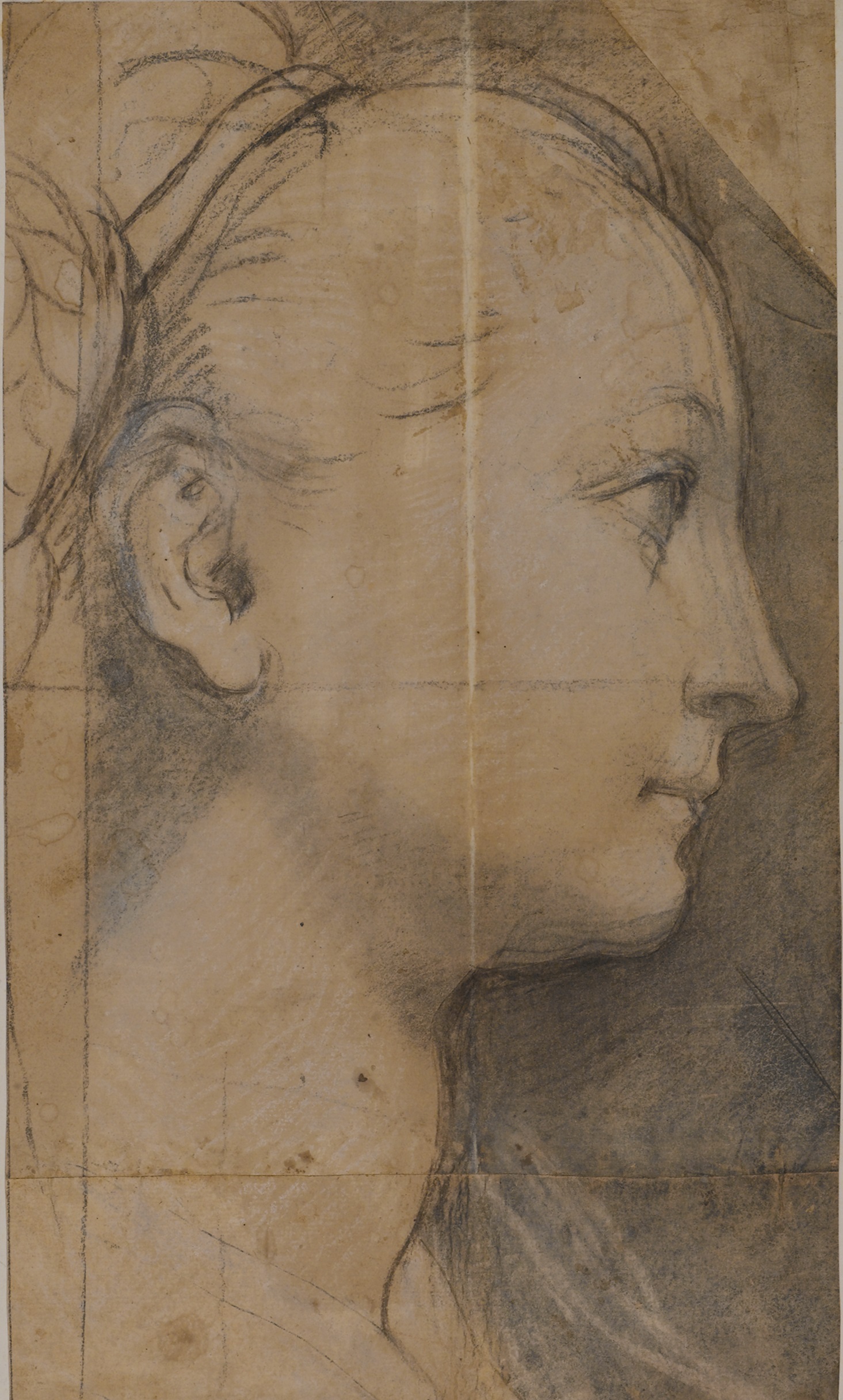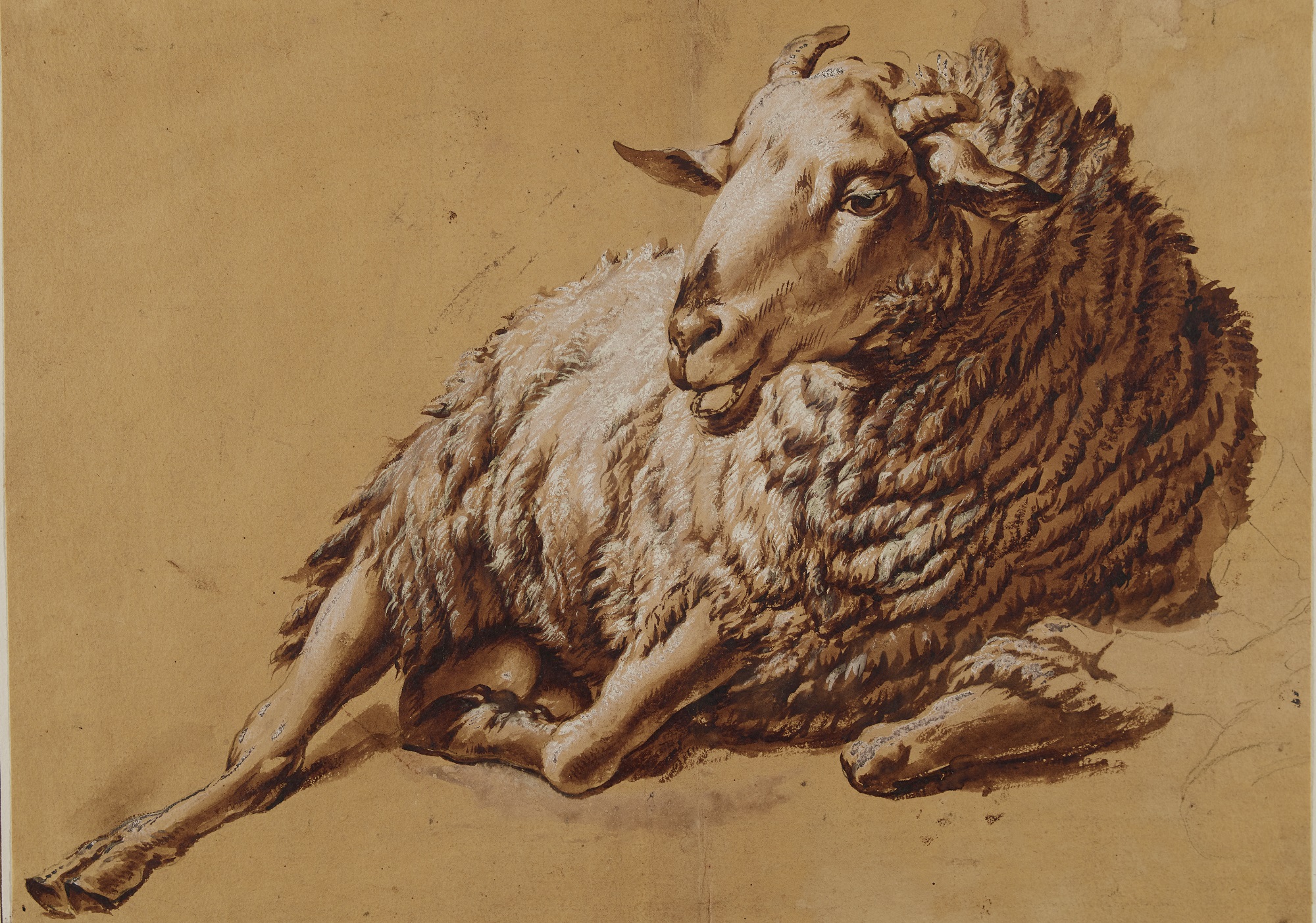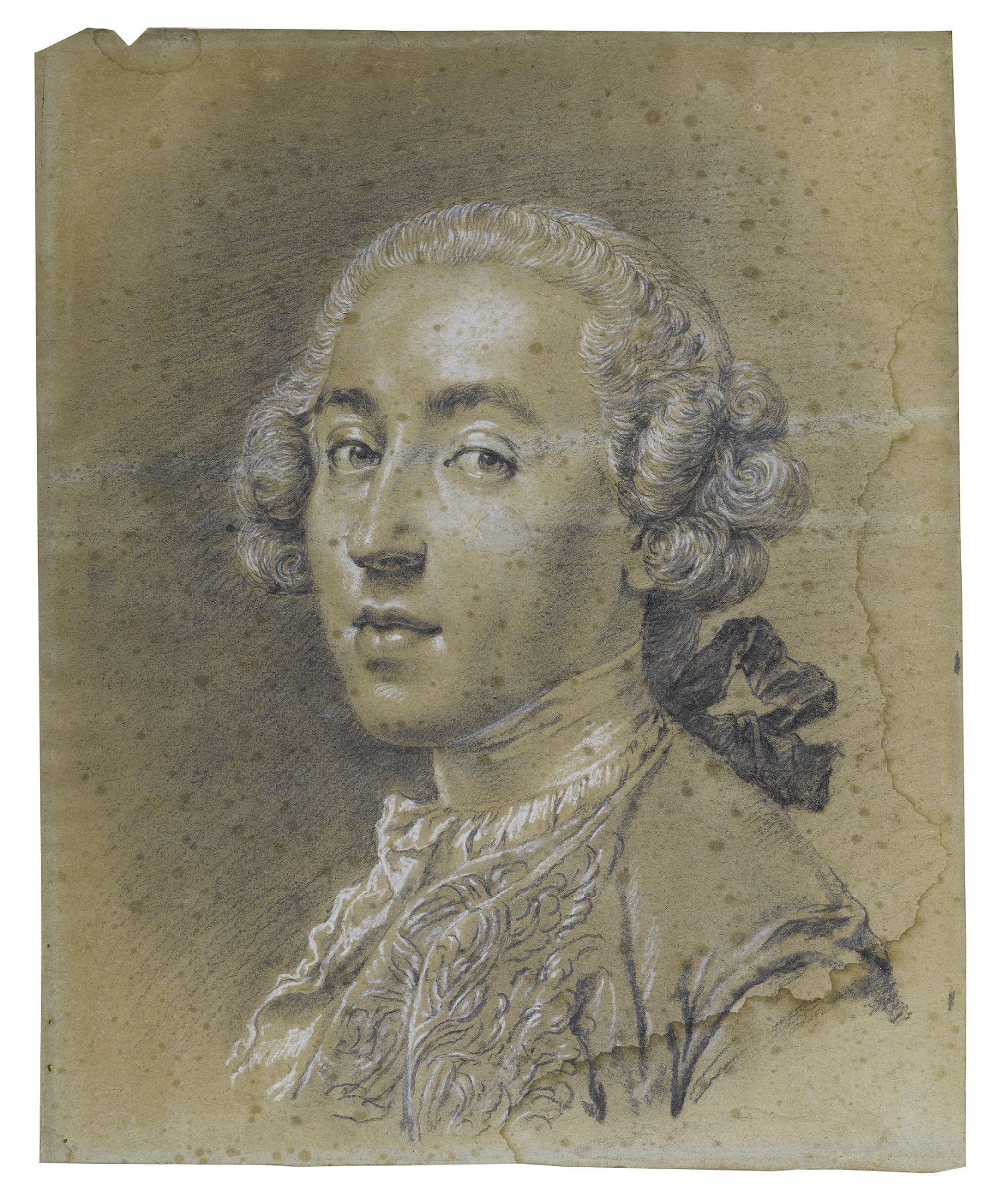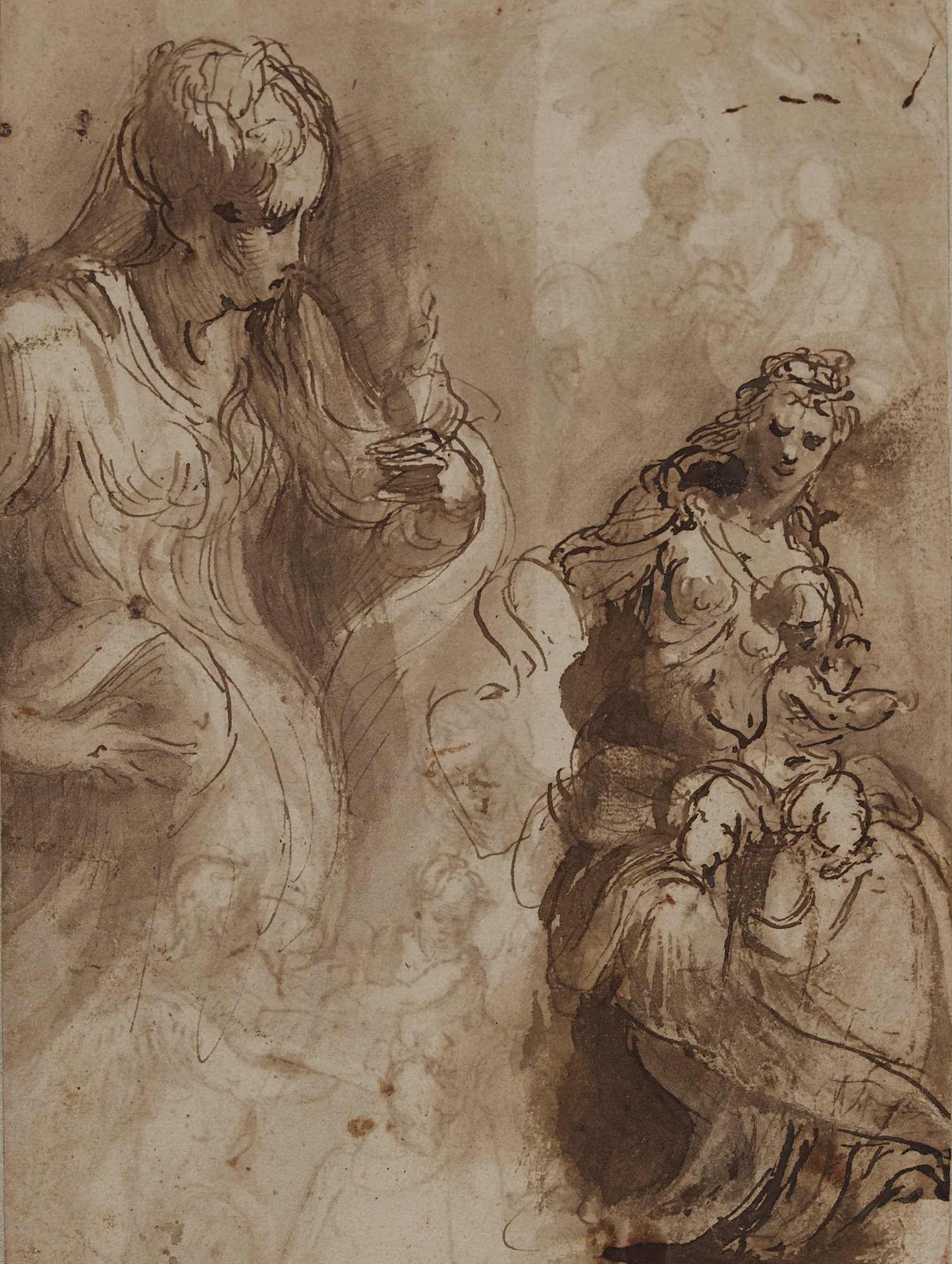Hans von Aachen, Diana and Actaeon, Cabinet of Drawings of the Castello Sforzesco | Courtesy of the Municipality of Milan
It was Prince Alberico XII Barbiano di Belgioioso who put together this monumental artistic arsenal – no less than ten thousand pieces, including prints and drawings – one of the major collectors of Milan in the neoclassical age, an official in the Austrian government, a friend of Ugo Foscolo and a great lover of the arts and letters.
Until February 26th the exhibition Prince’s drawings. Alberico Barbiano’s collection of Belgioiosoat the Cabinet of Drawings of the Castello Sforzesco, presents visitors with the result of a long research work which, thanks to the investigations conducted in the Archive of the Brivio Sforza Foundation in Merate, has made it possible to reconstruct the prince’s graphic collection by presenting 44 drawings of the collection made by masters such as Albrecht Dürer, Federico Barocci, Giulio Cesare Procaccini, Carlo MarattiJames Ceruti.

Federico Barocci, Female face, preparatory cartoon for the Uffizi altarpiece, circa 1575-1579 – Cabinet of Drawings of the Castello Sforzesco – Municipality of Milan
This collection, a mirror of everything available on the European market in the eighteenth century, had so far remained in the shadows, surpassed in fame by the more famous collection of paintings that belonged to Prince Alberico and from which pieces such as the Madonna Litta by Boltraffio, now in the Hermitage in St. Petersburg, and the Lady of Pollaiolo in the Poldi Pezzoli Museum.
But who was this noble collector in love with drawing?
“Alberico XII Barbiano di Belgioioso – explains the curator of the exhibition Alessia Alberti, curator at the Cabinet of Drawings and Collection of Prints “A. Bertarelli” at the Castello Sforzesco in Milan – is a Milanese nobleman who lived in the full eighteenth century and inherited the title of prince from his father Antonio who had first received it for his commitment in the Seven Years’ War. Thanks to his various diplomatic assignments in Europe Alberico travels a lot, acquires a European culture, assembles a collection that boasts the most illustrious names in the field of collecting prints and drawings”.
Of the ten thousand drawings originally in the collection, 400 came to the Municipality of Milan donated in 1943 by the Trivulzio family who had received them by inheritance during the 19th century. In 1864, Alberico XII’s last heir had in fact married a Trivulzio, thus initiating the merger of the family patrimony.

Francesco Londonio, Study of a sheep, Cabinet of Drawings of the Castello Sforzesco – Municipality of Milan
There is a reason, in particular, which induces to visit the exhibition.
“The discovery that we are now presenting on the occasion of this exhibition – continues Alberti – is precisely that we have reconnected this nucleus of drawings and prints, which were believed to be the result of Trivulzio’s collecting, to Alberico’s collecting activity, tracing its roots back to an eighteenth-century looking to Europe. And then, thanks to the preparation work for the exhibition, which lasted two years, we were able to focus on various figures of the Lombard seventeenth century, such as the entire Procaccini family up to Ercole il Giovane, showing the transition from the figurative culture of Emilia Romagna to that of Lombardy and then the formation of Lombard culture through the second Ambrosian Academy with some discoveries linked to the names of Busca or Lanciani”.
The exhibition offers the opportunity to admire forty works from the entire collection, while all 400 works, already available online on the Graphic Collections website, can be “browsed through” in the catalogue, which is about to be published.
Among the gems that await the visitor, five works by Albrecht Durer which the artist himself had defined as “my masterpieces”, such as St. Jerome in the study, The Great Fortune – which amazes with its intense blacks – and the famous Sant’Eustachiocharacterized by a gothicism, a careful pursuit of details, a sense of vacuous horrors that permeates the entire composition. In short, a taste of what Giuseppe Bossi, in drafting Alberico’s works, had defined as “the most important tests”.

Luca Cambiaso, Battle of newts, Cabinet of Drawings of the Castello Sforzesco – Municipality of Milan
A discovery concerns an early work by Luca Cambiaso, a work of great intensity, inspired by the knowledge of Michelangelo and the artists closest to him such as Perin del Vaga. On display we find works such as a mysterious Baptism of Christexecuted on pink prepared paper, from the circle of Pellegrino Tibaldi, and an extraordinary fragment of cardboard by Federico Barocci, preparatory for the altarpiece of the Our Lady of the People (today in the Uffizi Galleries), “a cartoon in perfect condition which attests to the way of working inside the workshops, revealing a Federico Barocci better in this case in drawing than in the final result in painting, with a high yield nature of this character in profile”.
The largest section of drawings concerns the seventeenth century, with dozens of sheets from the Procaccini workshops and a small nucleus of Roman sheets linked to Pietro da Cortona and Carlo Maratti. There is no shortage of new attributions formulated for the Lombard seventeenth century, from Carlo Francesco Nuvolone to Carlo Cornara, from Legnanino to Andrea Lanzani.
“What we have today in the Castello Sforzesco represents about a third of Alberic XII’s initial collection. We do not know what fate the rest of the collection had. It had probably been sold by the family before the end of the 19th century” continues Alberti.

Giacomo Ceruti known as Pittocchetto, Portrait of Alberico Belgioioso, Cabinet of Drawings of the Castello Sforzesco – (C) Municipality of Milan
Alberico’s collecting unfortunately abruptly ceased with the beginning of the 1790s when the first economic problems began for the now seventy-year-old prince. With the arrival of Napoleon Bonaparte during his first campaign in Italy in 1796 and the subsequent conquest of Milan, the collector, judged to have collaborated with the Austrian government, was arrested on 24 May. Released, he decides to leave public life, taking refuge in his country residence, the castle of Belgioioso, near Pavia, surrounded by the affection of writers such as Foscolo.
In the exhibition, the collector’s daily life passes through the display, in a special showcase, of some documents from the time of Alberic XII, including inventories, letters, original receipts relating to the purchase of the drawings, displayed alongside the loans from the Historical Archive Civico, the Trivulziana Library of the Castello Sforzesco and the Brivio Sforza Foundation.
The Brivio Sforza Foundation of Merate, in particular, lent the inventory drawn up in 1813 by Giuseppe Bossi on Alberico’s death with the list, and alongside the estimate, of all the prints and drawings, which was then the element proof of the original belonging to Alberico of the whole corpus.

Camillo Boccaccino, Study for the altarpiece of Santa Marta in Cremona, Cabinet of Drawings of the Castello Sforzesco – Municipality of Milan
The exhibition dedicated to the drawings of the Prince of Belgioioso, which renews interest in this figure, is just one of the many activities hosted in the graphics rooms of the Castello Sforzesco, which exhibit in rotation the heritage of the Civic Cabinet of Drawings, born in the 1920s of the twentieth century, and today a casket of 35,000 drawings by Italian and foreign masters from the fifteenth century to the present day.
Meanwhile, the calendar of exhibitions in the graphics rooms is already looking towards 2023. On the agenda is an exhibition of contemporary art dedicated to Giovanni Frangi and his production, a summer exhibition entitled “Greetings from…” with a series of postcards, posters, matchboxes, magazine covers related to the theme of travel, and, in autumn, an insight into ancient drawing through the red pencil technique, with an itinerary in collaboration with the Dutch Institute of History of art.
The exhibition Prince’s drawingswith free admission, can be visited from Tuesday to Sunday from 10 to 17.30 (last admission at 17).
![]() Read also:
Read also:
• The designs of the Prince. Alberico Barbiano’s collection of Belgioioso

